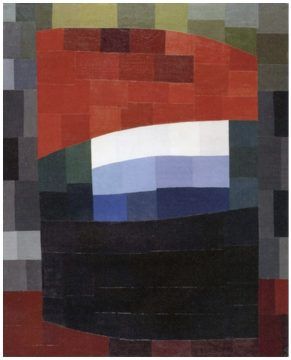From The Brooklyn Rail:

Andrea Scrima (Brooklyn Rail): Lance, you’ve written a novel that, in a nod to Ulysses (1922) and Mrs. Dalloway (1925) (but perhaps also to Do Androids Dream of Electric Sheep? (1968)), takes place in a single 24-hour period—in this case, June 10, 1927. My Red Heaven—which borrows its title from a painting by the exiled German artist Otto Freundlich—is a paean to the Weimar era and a chilling anticipation of the ruinous events that would soon befall Germany and the rest of Europe and the world. What made you choose this particular summer day?
Lance Olsen: I think I was thinking less of Phillip K. Dick (whom I adore) when the idea for the novel surfaced than James Joyce and Virginia Woolf, who I feel are everywhere in My Red Heaven. In 2015, I stumbled on Freundlich’s abstract Cubist painting at the Pompidou. It was completed in 1933, the year Hitler became chancellor. For some reason, that painting all at once became connotative to me of the cultural energy of the Weimar era. It also gestures toward a collage aesthetic in its collection of apparently disparate forms on a surface that simultaneously unifies them and underscores their multiplicity. I found myself wanting to see what happens when that aesthetic is translated into a narrative architectonics.
More here.
